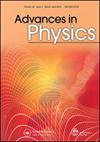用于电子和自旋电子学的超薄氧化膜和界面
IF 13.8
1区 物理与天体物理
Q1 PHYSICS, CONDENSED MATTER
引用次数: 385
摘要
氧化物已经成为电子设备新概念的关键成分。在很大程度上,这是由于超薄氧化膜和氧化界面产生了大量的新物理和新功能。在这里,我们对这个广阔领域中选定的主题提出了一个观点,并重点关注两个主要问题。本文的第一部分介绍了超薄绝缘氧化物薄膜作为隧道结屏障的应用。除了介电非磁性外延势垒可以产生超过百分之几的隧穿磁阻外,我们还特别关注利用某些氧化物的多功能特性以实现“有源”隧道势垒的可能性。在这些方法中,穿过势垒的电导不仅由偏置电压和/或电极的磁性状态控制,而且还取决于势垒的铁态。一些例子包括使用铁和铁磁性氧化物的自旋过滤效应,以及使用铁电势垒实现迟滞多态结的可能性。本综述的第二部分致力于在氧化物界面上出现的新状态。它们通常与相应的块状材料完全不同,它们带来了新的功能,可用于自旋电子学和电子结构。我们回顾了这些新性质的主要机制(如磁耦合、电荷转移和邻近效应),并总结了一些最典型的现象。这些包括在绝缘体之间的界面上形成高迁移率的二维电子气体,在非超导(或非铁磁性)材料之间的界面上出现超导(或铁磁性),在磁性/铁电界面上观察磁电效应或在全氧化物铁磁性/超导界面上相互作用和竞争相互作用的影响。最后,我们将两个已回顾的研究领域联系起来,并强调隧道几何结构特别适合于探测氧化势垒/电极界面的新型界面效应。最后,我们给出了利用新型氧化物界面现象的隧道装置的一些方向。本文章由计算机程序翻译,如有差异,请以英文原文为准。
Ultrathin oxide films and interfaces for electronics and spintronics
Oxides have become a key ingredient for new concepts of electronic devices. To a large extent, this is due to the profusion of new physics and novel functionalities arising from ultrathin oxide films and at oxide interfaces. We present here a perspective on selected topics within this vast field and focus on two main issues. The first part of this review is dedicated to the use of ultrathin films of insulating oxides as barriers for tunnel junctions. In addition to dielectric non-magnetic epitaxial barriers, which can produce tunneling magnetoresistances in excess of a few hundred percent, we pay special attention to the possibility of exploiting the multifunctional character of some oxides in order to realize ‘active’ tunnel barriers. In these, the conductance across the barrier is not only controlled by the bias voltage and/or the electrodes magnetic state, but also depends on the barrier ferroic state. Some examples include spin-filtering effects using ferro- and ferrimagnetic oxides, and the possibility of realizing hysteretic, multi-state junctions using ferroelectric barriers. The second part of this review is devoted to novel states appearing at oxide interfaces. Often completely different from those of the corresponding bulk materials, they bring about novel functionalities to be exploited in spintronics and electronics architectures. We review the main mechanisms responsible for these new properties (such as magnetic coupling, charge transfer and proximity effects) and summarize some of the most paradigmatic phenomena. These include the formation of high-mobility two-dimensional electron gases at the interface between insulators, the emergence of superconductivity (or ferromagnetism) at the interface between non-superconducting (or non-ferromagnetic) materials, the observation of magnetoelectric effects at magnetic/ferroelectric interfaces or the effects of the interplay and competing interactions at all-oxide ferromagnetic/superconducting interfaces. Finally, we link up the two reviewed research fields and emphasize that the tunneling geometry is particularly suited to probe novel interface effects at oxide barrier/electrode interfaces. We close by giving some directions toward tunneling devices exploiting novel oxide interfacial phenomena.
求助全文
通过发布文献求助,成功后即可免费获取论文全文。
去求助
来源期刊

Advances in Physics
物理-物理:凝聚态物理
CiteScore
67.60
自引率
0.00%
发文量
1
期刊介绍:
Advances in Physics publishes authoritative critical reviews by experts on topics of interest and importance to condensed matter physicists. It is intended for motivated readers with a basic knowledge of the journal’s field and aims to draw out the salient points of a reviewed subject from the perspective of the author. The journal''s scope includes condensed matter physics and statistical mechanics: broadly defined to include the overlap with quantum information, cold atoms, soft matter physics and biophysics. Readership: Physicists, materials scientists and physical chemists in universities, industry and research institutes.
 求助内容:
求助内容: 应助结果提醒方式:
应助结果提醒方式:


